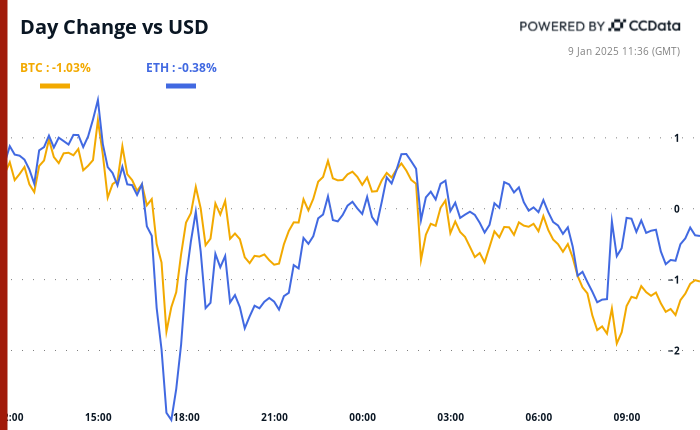“The originals are visionary – they’re always thinking out of the box. And often in the time they are alive, they’re not understood at all. Sometimes it takes years after they are dead, even hundreds of years, for them to be properly understood. Today, we need people with this vision to create new ways of learning and forms of art.” — Marina Abramovich
Introduction
Technology has been used in unexpected ways by artists since the beginning of time. As the world becomes increasingly digital, so too do the mediums which we most associate with real-world engagement — i.e., mediums that aren’t digitally mediated.
The next medium to get its digital makeover is performance art, which we here are using as an umbrella term for works whose primary material is the present flesh-and-bone human body — theater, dance, and experimental works beyond proscenium or categorization.
What’s Already Happening in Digital Performance Art
The performing arts got its first serious jolt of digital revolution in March 2020, and the well-documented and sudden shift that theater and dance creators had to come to terms with in the pandemic years will live on forever even as the technologies and processes evolve and improve.
But then NFTs entered the conversation.
Claiming to be the first performance NFT, Russian provocateur Petr Davydtchenko sold a digital recording of a performance piece in which he eats a live bat outside of the European Parliament building in Brussels.
In September of 2021, VR Gold Award Director Hsin-Chien Huang, celebrity chef André Chiang, and contemporary artist Billy Chang released “We Are What We Eat,” a derivative work from the 2021 Ars Electronica Festival’s “Earth Tour: Taste Soil.” Collectors attended a Creator’s Night at Chiang’s restaurant Raw in Taipei in December 2021 to “enjoy an immersive, sensory art journey.”

In December 2021, Bonham’s sold the first ballet NFT, Natalia Osipova: Triptych, which sold for a combined total of £59,424. World-famous ballerina Natalia Osipova performed three pieces for three NFTs. Two pieces were from the classic ballet Giselle, and one was from the contemporary duet Left behind, in which she danced alongside her partner, Jason Kittelberger.

In July 2022, Marina Abramovich, godmother of performance art, released her first NFT revisiting her 2001 homage to her father, “The Hero,” to create the digital reworking entitled “The Hero 25FPS,” one of the artist’s most personal and autobiographical works featuring her stoically clad in black, astride a white horse, and holding a large white flag.

MakersPlace just held its first digital exhibition of digital performance works curated by dance and performance duo Neosutras, who brought a range of performers to MakersPlace. Not limited by one genre of performance, the Neoforms exhibit included breakdancers, trickers, acrobats, and more.
And, of course, we’d be remiss to skip mention of the metaverse, home to massive performances by the likes of Travis Scott (full performance video below), Steve Aoki’s A0KIVERSE, and fully virtual pop star Polar.
Though promising, the metaverse isn’t yet an inviting venue for performance artists who aren’t at a stratospheric level of fame and funding, but it undoubtedly will play a huge role in revolutionizing performance art in the coming years.
Next-Generation Digital Performance Art
But performance itself is so much more than bodies moving on a screen — after all, we get that with movies, TV, Instagram, YouTube, and TikTok. The next big opportunity for digital performing arts lies just beyond the next technological hurdle of bringing augmented and virtual reality to the everyday user.
Fans of immersive theater are waiting with bated breath for whatever comes out of the partnership between immersive theater troupe Punchdrunk (creators of “Sleep No More”) and AR powerhouse Niantic (Pokemon Go).
But while we wait, London’s National Theater is leading the pack in terms of bridging the gap between immersive technologies and immersive performance with their Immersive Storytelling Studio. They’ve launched an AR musical that allows viewers to see the performance set against the backdrop of wherever their phone happens to be pointing. The dynamics of this kind of performance will change rapidly as AR headsets encroach upon and eventually replace phones.

The same goes for the possibilities hinted at in the New York City High Line’s recent AR Public Sculpture Hunt, launched in partnership with The Shed. It’s not hard to imagine a performance that is staged in a studio somewhere and “broadcast” to select locations all over the world, forcing people to commune over performance in real time, though the performance itself is experienced in AR.

Just as likely, though, you’ll be able to experience your favorite Gen Z choreographer’s entire body of work through AR glasses wherever you’d like — whether it’s in your living room, on a quiet beach, or inside of a crowded mall. And I, for one, won’t be surprised if the dancers aren’t even actual real people.
For updates on all of our upcoming drops, subscribe to our newsletter below.
Read More: rare.makersplace.com









 Bitcoin
Bitcoin  Ethereum
Ethereum  Tether
Tether  XRP
XRP  Solana
Solana  Dogecoin
Dogecoin  USDC
USDC  Cardano
Cardano  Lido Staked Ether
Lido Staked Ether  TRON
TRON  Avalanche
Avalanche  Wrapped stETH
Wrapped stETH  Sui
Sui  Toncoin
Toncoin  Chainlink
Chainlink  Shiba Inu
Shiba Inu  Wrapped Bitcoin
Wrapped Bitcoin  Stellar
Stellar  Hedera
Hedera  Polkadot
Polkadot  WETH
WETH  Bitcoin Cash
Bitcoin Cash  LEO Token
LEO Token  Litecoin
Litecoin  Uniswap
Uniswap  Pepe
Pepe  Hyperliquid
Hyperliquid  Wrapped eETH
Wrapped eETH  NEAR Protocol
NEAR Protocol  Ethena USDe
Ethena USDe  USDS
USDS  Internet Computer
Internet Computer  Aptos
Aptos  Aave
Aave  Mantle
Mantle  POL (ex-MATIC)
POL (ex-MATIC)  Cronos
Cronos  Ethereum Classic
Ethereum Classic  Render
Render  Bittensor
Bittensor  MANTRA
MANTRA  Monero
Monero  Tokenize Xchange
Tokenize Xchange  Artificial Superintelligence Alliance
Artificial Superintelligence Alliance  Dai
Dai  Virtuals Protocol
Virtuals Protocol  Arbitrum
Arbitrum